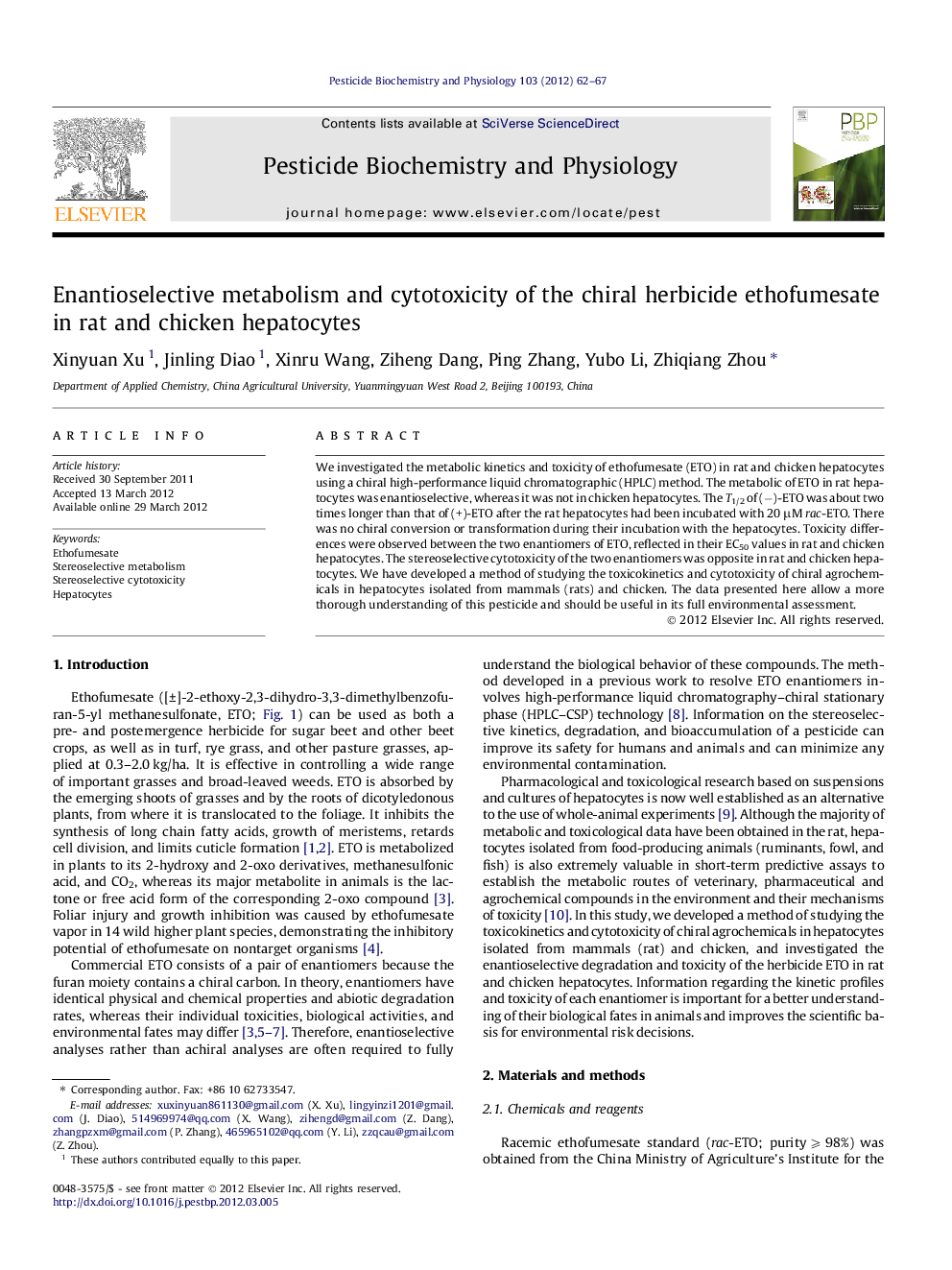| Article ID | Journal | Published Year | Pages | File Type |
|---|---|---|---|---|
| 2009295 | Pesticide Biochemistry and Physiology | 2012 | 6 Pages |
We investigated the metabolic kinetics and toxicity of ethofumesate (ETO) in rat and chicken hepatocytes using a chiral high-performance liquid chromatographic (HPLC) method. The metabolic of ETO in rat hepatocytes was enantioselective, whereas it was not in chicken hepatocytes. The T1/2 of (−)-ETO was about two times longer than that of (+)-ETO after the rat hepatocytes had been incubated with 20 μM rac-ETO. There was no chiral conversion or transformation during their incubation with the hepatocytes. Toxicity differences were observed between the two enantiomers of ETO, reflected in their EC50 values in rat and chicken hepatocytes. The stereoselective cytotoxicity of the two enantiomers was opposite in rat and chicken hepatocytes. We have developed a method of studying the toxicokinetics and cytotoxicity of chiral agrochemicals in hepatocytes isolated from mammals (rats) and chicken. The data presented here allow a more thorough understanding of this pesticide and should be useful in its full environmental assessment.
Graphical abstractFig. 2 The concentration–time curves and EFs of ETO enantiomers in rat and chicken hepatocytes incubated with 20 M rac-ETO. The data are expressed as the means ± SD of three independent experiments.Figure optionsDownload full-size imageDownload as PowerPoint slideHighlights► We investigated the degradation kinetics and toxicity of ETO in rat and chicken hepatocytes using a chiral HPLC method. ► The degradation of ETO in rat hepatocytes was enantioselective, whereas it was not in chicken hepatocytes. ► Toxicity differences were observed between the two enantiomers in rat and chicken hepatocytes. ► The stereoselective toxicity of the two enantiomers was opposite in rat and chicken hepatocytes.
